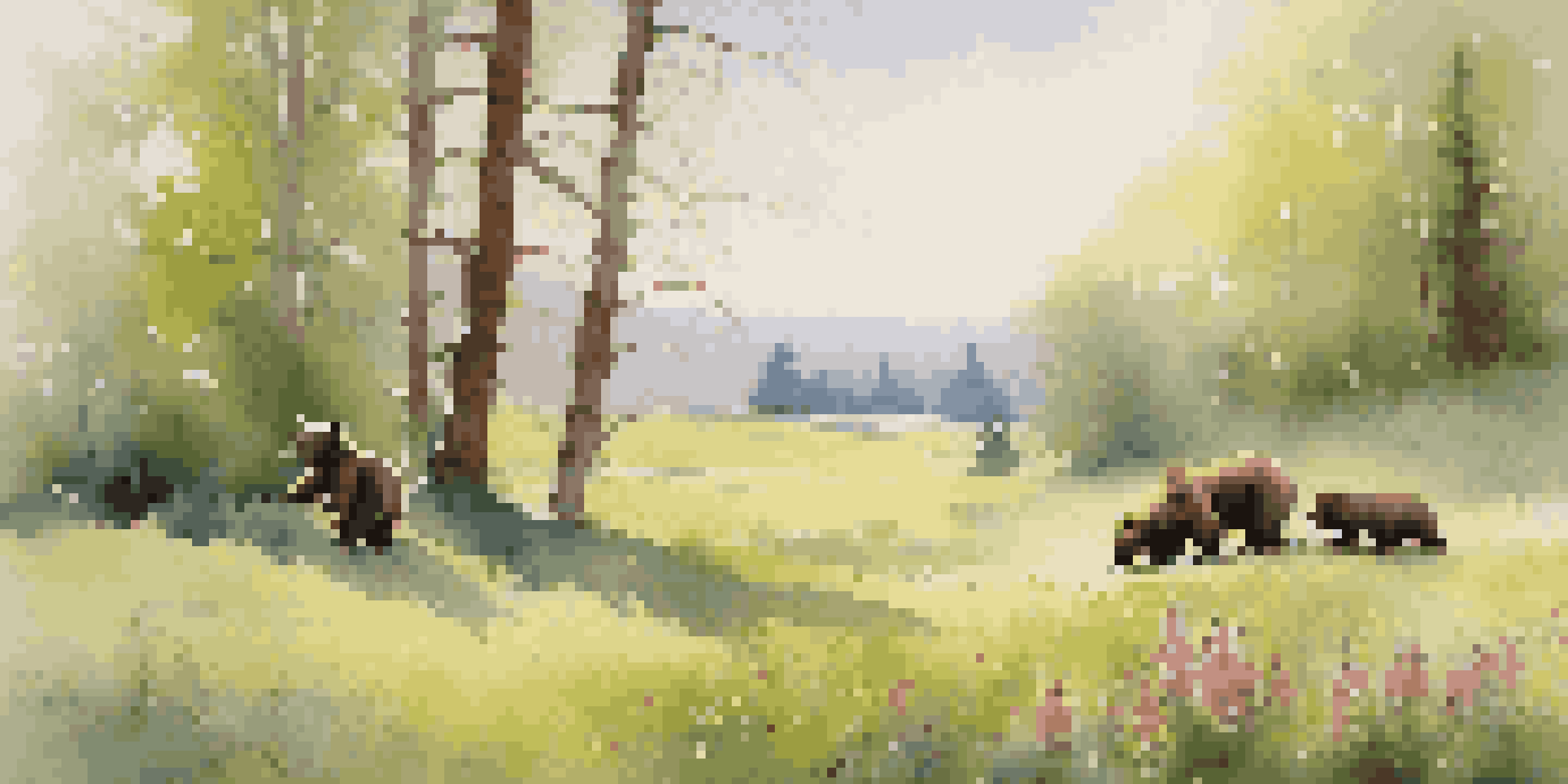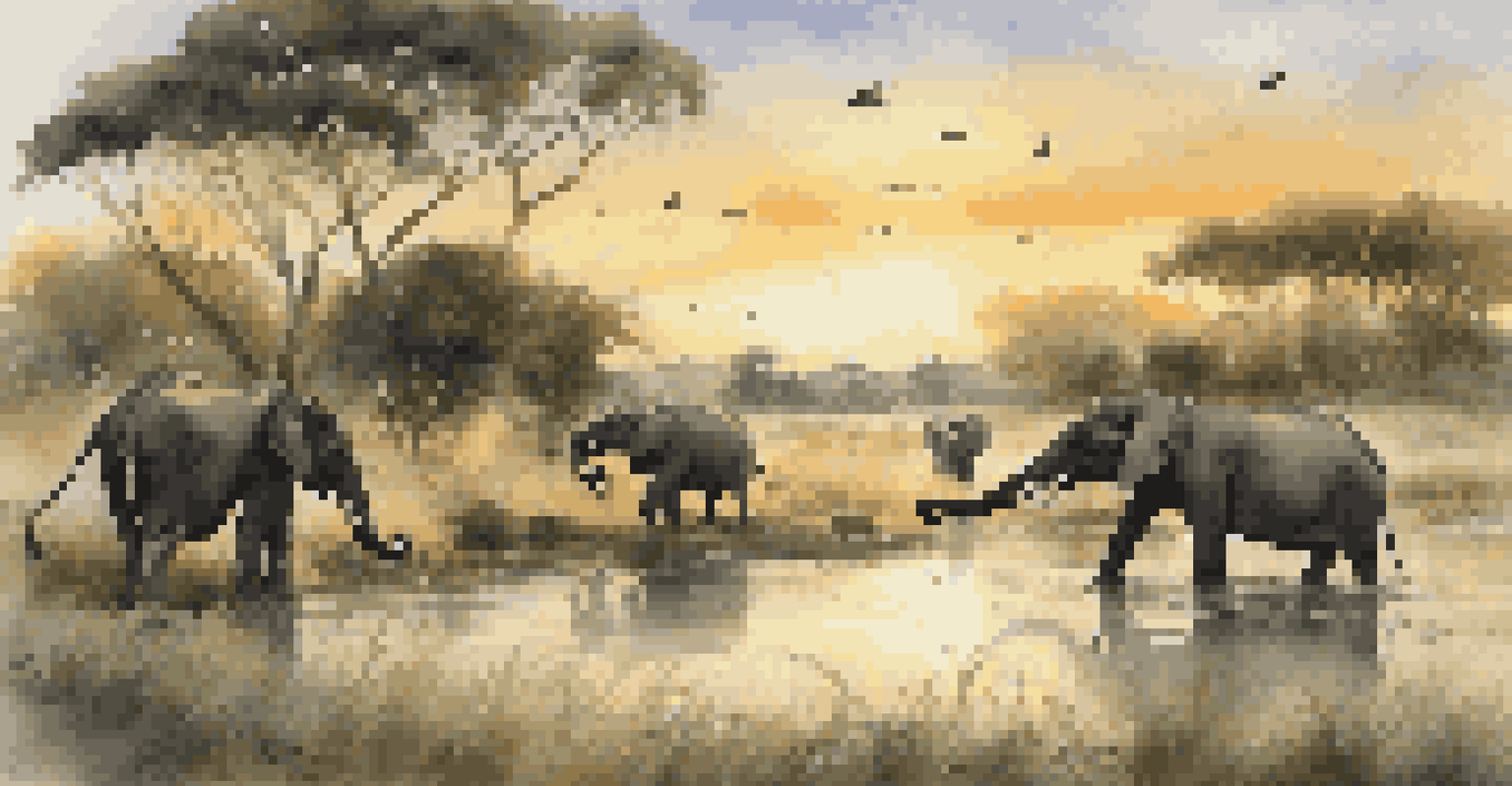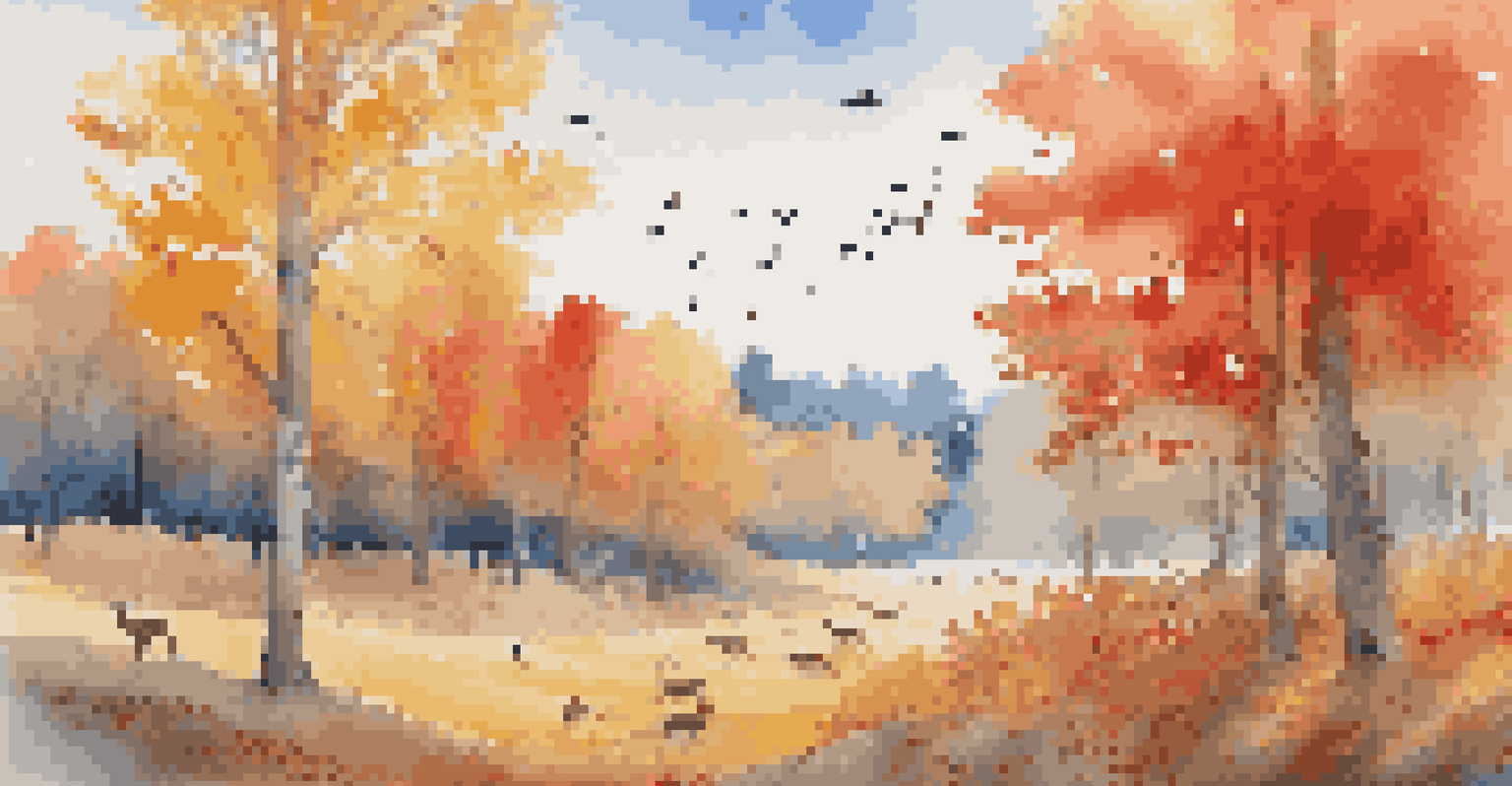Wildlife Watching: Best Seasons for Animal Encounters

Why Timing Matters in Wildlife Watching
Wildlife watching is all about timing; different seasons bring out various species. Animals have unique behavioral patterns influenced by the changing weather and food availability. Understanding these patterns can significantly enhance your wildlife experience.
In every walk with nature one receives far more than he seeks.
For instance, many animals are more active during certain months, making them easier to spot. Migratory patterns also play a crucial role—some species travel vast distances depending on the season. By aligning your wildlife watching trips with these natural rhythms, you're more likely to have memorable encounters.
Ultimately, knowing when to go can mean the difference between seeing a rare animal or simply enjoying a quiet day in nature. So, let’s dive deeper into the best seasons for wildlife watching!
Spring: A Season of Awakening
Spring is a magical time for wildlife watching, as many animals come out of hibernation. This is when you can witness the birth of new life, with baby animals making their debut. From playful bear cubs to fluffy fawns, spring is a time of renewal and excitement.

Birdwatchers will also find spring particularly rewarding, as migratory birds return from their winter travels. The vibrant colors and beautiful songs of these birds create a symphony of sights and sounds. Plus, the landscape bursts into bloom, providing a stunning backdrop for your adventures.
Seasons Shape Wildlife Experiences
Understanding the seasonal behaviors of animals can greatly enhance your wildlife watching experiences.
If you're keen on spotting wildlife, spring is a perfect season to grab your binoculars and head outdoors. Just remember to be respectful of animal habitats, especially as mothers care for their young.
Summer: The Peak of Activity
Summer is arguably the best time for wildlife watching, as animals are at their most active. With longer days and warmer weather, you can explore the great outdoors for extended hours. Many species are busy feeding and preparing for the upcoming months, making them easier to spot.
Look deep into nature, and then you will understand everything better.
This is an ideal time for observing larger mammals, like elephants and deer, as they thrive in the lush greenery. Additionally, summer nights offer unique opportunities to see nocturnal creatures. With patience and a little luck, you might spot owls, raccoons, or even elusive foxes.
However, don’t forget to stay hydrated and protect yourself from the sun while enjoying your wildlife adventures. The more comfortable you are, the more you can focus on the beauty of nature.
Autumn: A Stunning Transition
Autumn is a spectacular time for wildlife watching, marked by vivid foliage and animal preparations for winter. Many species become more visible as they stock up on food, making them easier to observe. Witnessing the vibrant colors of leaves while spotting wildlife is a treat for any nature lover.
During this season, migratory birds begin their journey south, creating a unique spectacle. Birdwatchers can delight in the sight of flocks fluttering through the skies, often stopping to rest in picturesque locations. It's a great time to grab your camera and capture these fleeting moments.
Spring: Birth and Renewal
Spring offers a unique opportunity to witness the birth of new life in the animal kingdom.
Autumn also heralds the mating season for many animals, leading to interesting behaviors. Observing these interactions can provide fascinating insights into wildlife life cycles.
Winter: A Season of Serenity
Winter might seem quiet, but it offers unique wildlife watching opportunities. Many animals adapt to the cold, and their behaviors change, making for fascinating observations. For example, animals like wolves and deer are often easier to spot against the stark white backdrop of snow.
Birdwatching takes on a different dimension in winter as well. Many birds stay in their habitats, while others migrate to milder areas. The contrast of their colorful feathers against the snow can create breathtaking visuals.
While the cold may deter some, those who brave the winter elements are often rewarded with peaceful encounters and stunning scenery. Just remember to dress warmly and enjoy the tranquility of nature.
Location-Specific Wildlife Opportunities
Different regions offer unique wildlife watching experiences throughout the year. For instance, if you're in the tropics, you might see vibrant wildlife year-round. However, in temperate regions, each season provides distinct opportunities.
In places like Yellowstone National Park, spring offers bison calving, while autumn is prime for elk rutting. Understanding the seasonal highlights of specific locations can help you plan your wildlife adventures effectively.
Respect and Preparedness Matter
Bringing the right gear and respecting wildlife habitats are essential for a successful wildlife watching adventure.
Whether you're visiting a local park or a national reserve, research the seasonal behaviors of wildlife in that area. This knowledge can greatly enhance your experience and ensure you don't miss out on any exciting encounters.
Tips for Successful Wildlife Watching
To enhance your wildlife watching experience, come prepared with the right gear. Binoculars, a camera, and a good field guide can significantly improve your chances of spotting animals. Additionally, wearing neutral-colored clothing helps you blend into the environment.
Timing your outings for early morning or late afternoon can also yield better results, as many animals are more active during these hours. Staying quiet and patient is key; sometimes, just sitting still can lead to unexpected wildlife encounters.

Lastly, respect wildlife and their habitats. Keep a safe distance, and never feed the animals. By observing responsibly, you can enjoy and protect the natural world.
Conclusion: Embrace the Beauty of Nature
Wildlife watching is more than just a hobby; it's a way to connect with nature and appreciate the beauty around us. By understanding the best seasons for animal encounters, you can make the most of your adventures. Each season offers its own charm and opportunities for unforgettable experiences.
From the vibrant births of spring to the serene landscapes of winter, wildlife watching invites us to slow down and observe. So, whether you're an experienced naturalist or a curious beginner, there's always something new to discover.
So grab your gear, choose your season, and get ready to explore the fascinating world of wildlife. You never know what amazing encounters await you!